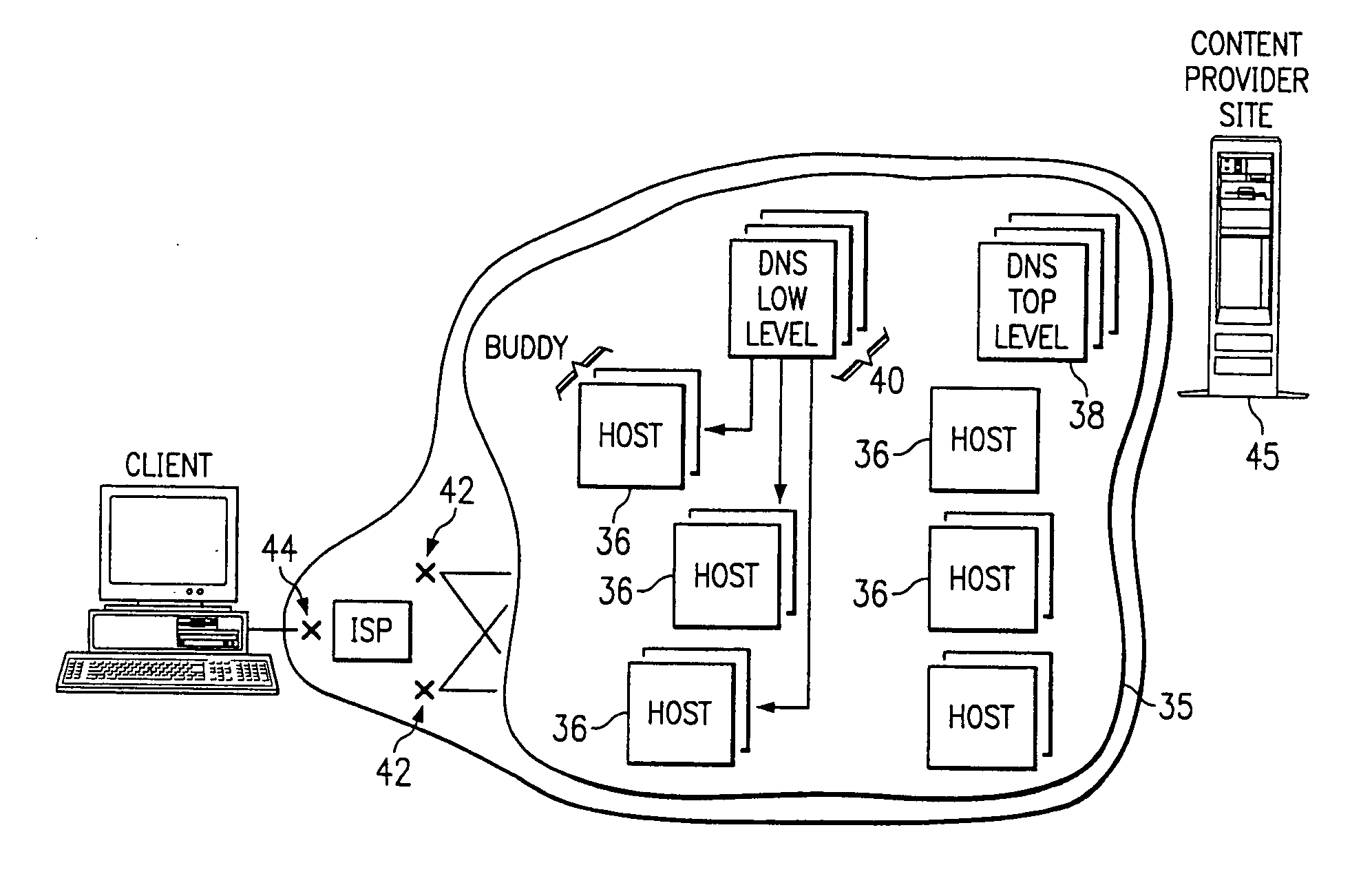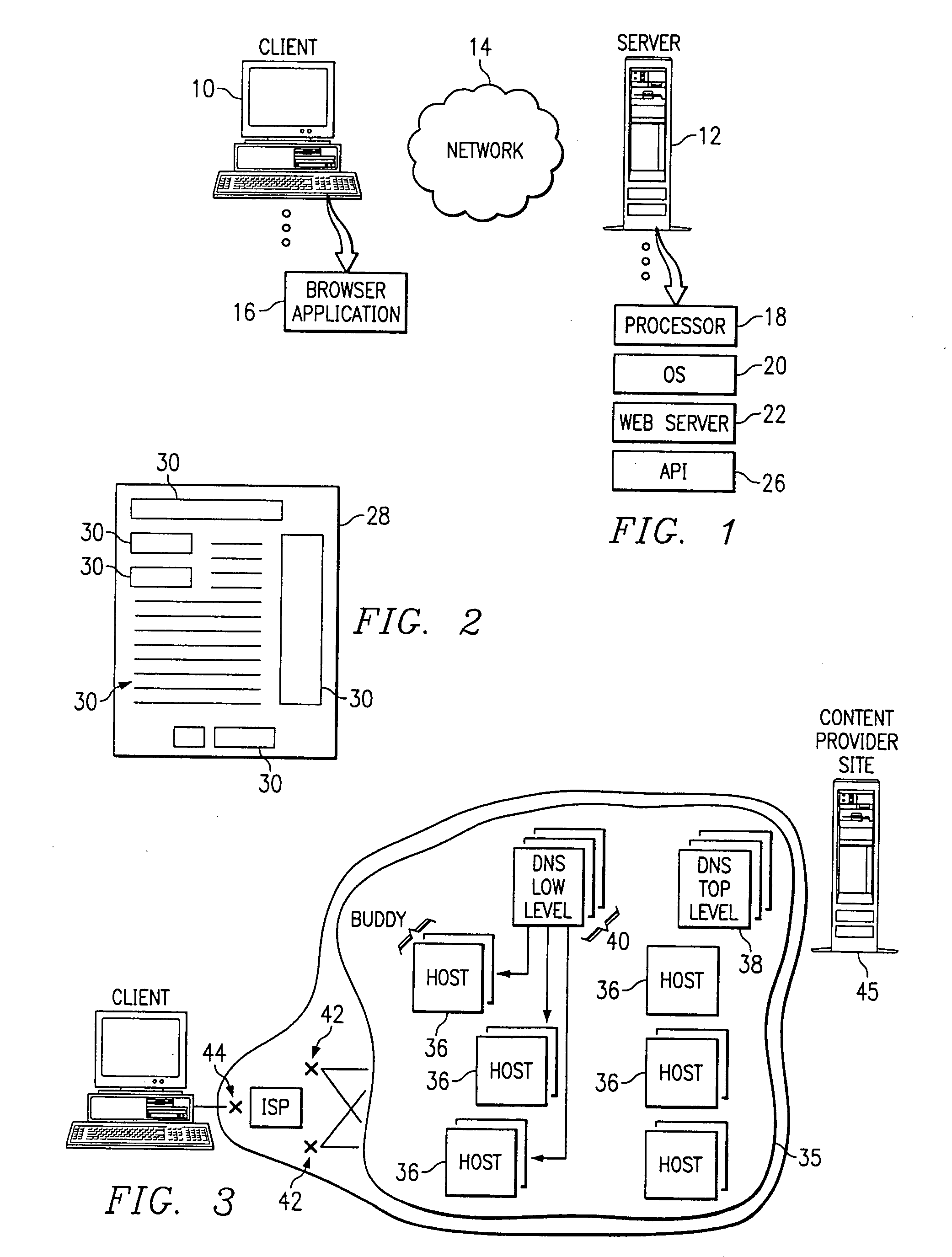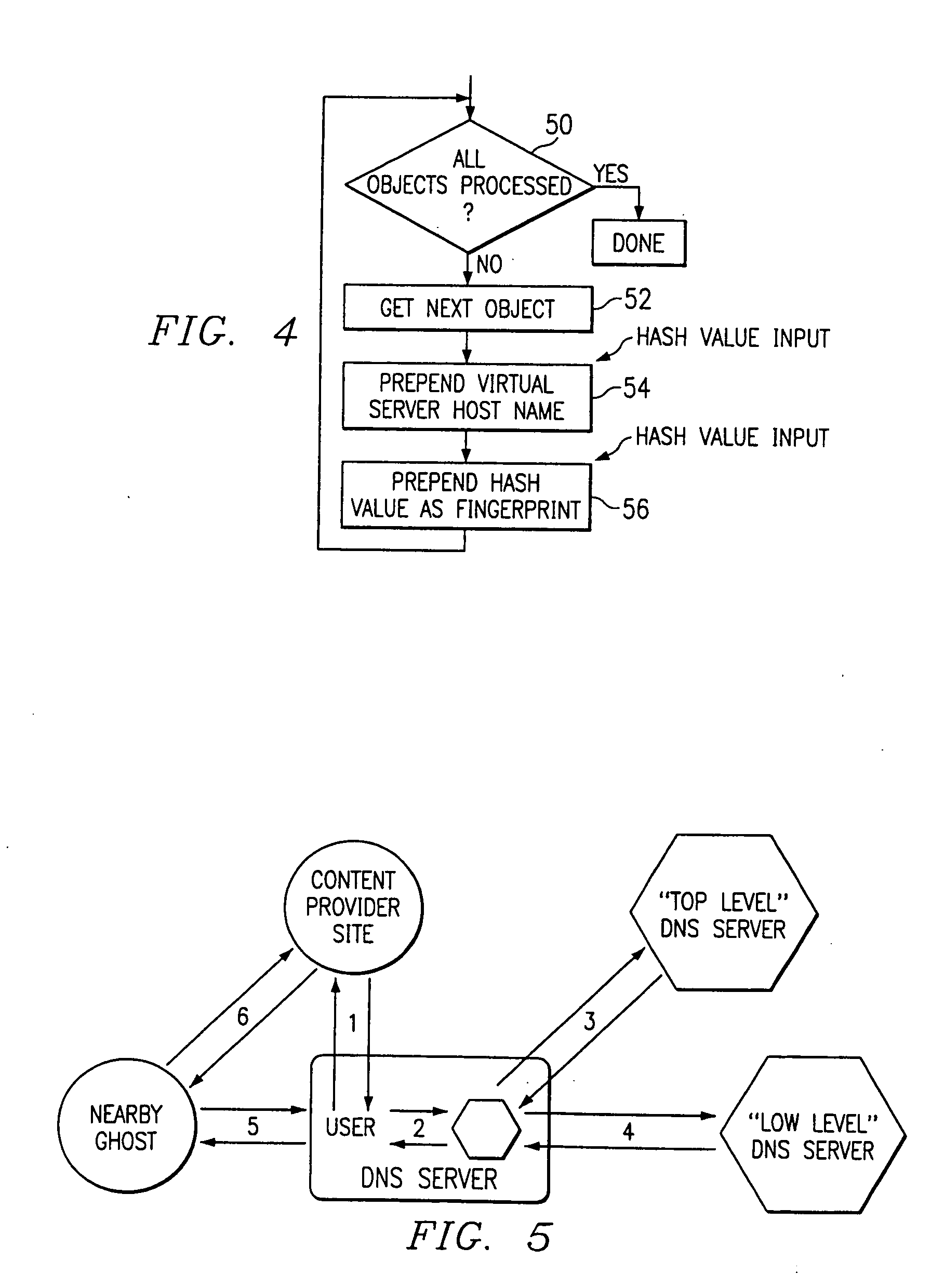Content distribution system using an alternative domain name system (DNS) and content servers
a content distribution system and domain name technology, applied in the field of information retrieval, can solve the problems of reducingaffecting putting unnecessary economic and operational burdens on content providers, etc., and achieves the effect of limiting the effectiveness of content providers' web pages, reducing the revenue of advertisers, and reducing the effect of content provider's results
- Summary
- Abstract
- Description
- Claims
- Application Information
AI Technical Summary
Benefits of technology
Problems solved by technology
Method used
Image
Examples
Embodiment Construction
[0033] A known Internet client-server system is implemented as illustrated in FIG. 1. A client machine 10 is connected to a Web server 12 via a network 14. For illustrative purposes, network 14 is the Internet, an intranet, an extranet or any other known network. Web server 12 is one of a plurality of servers which are accessible by clients, one of which is illustrated by machine 10. A representative client machine includes a browser 16, which is a known software tool used to access the servers of the network. The Web server supports files (collectively referred to as a “Web” site) in the form of hypertext documents and objects. In the Internet paradigm, a network path to a server is identified by a so-called Uniform Resource Locator (URL).
[0034] A representative Web server 12 is a computer comprising a processor 18, an operating system 20, and a Web server program 22, such as Netscape Enterprise Server. The server 12 also includes a display supporting a graphical user interface (G...
PUM
 Login to View More
Login to View More Abstract
Description
Claims
Application Information
 Login to View More
Login to View More - R&D
- Intellectual Property
- Life Sciences
- Materials
- Tech Scout
- Unparalleled Data Quality
- Higher Quality Content
- 60% Fewer Hallucinations
Browse by: Latest US Patents, China's latest patents, Technical Efficacy Thesaurus, Application Domain, Technology Topic, Popular Technical Reports.
© 2025 PatSnap. All rights reserved.Legal|Privacy policy|Modern Slavery Act Transparency Statement|Sitemap|About US| Contact US: help@patsnap.com



